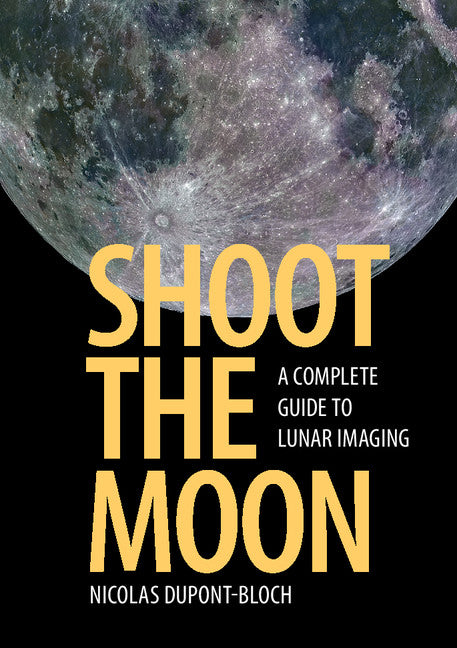Freshly Printed - allow 8 days lead
Couldn't load pickup availability
Shoot the Moon
A Complete Guide to Lunar Imaging
Dedicated to modern lunar imaging, this is an in-depth and illustrated guide to capturing impressive images of our nearest neighbour.
Nicolas Dupont-Bloch (Author)
9781107548442, Cambridge University Press
Paperback / softback, published 26 September 2016
330 pages, 153 b/w illus. 77 colour illus. 13 tables
24.8 x 17.5 x 1.5 cm, 0.69 kg
'[The book] covers the use of a wide range of equipment in all possible permutations, from phone cameras, consumer cameras, and standard lenses, up to the usual amateur CCD and CMOS cameras coupled to equatorially-mounted telescopes. The subject is treated with some humour (or quirkiness), with features like tables of methods where levels of difficulty are represented by social-media-type 'smiley' icons … This is the most thorough and detailed book covering the whole subject of lunar imaging I have yet seen. …' David Arditti, The Observatory
The Moon boasts an unexpected variety of landscapes - including volcanic features, sinuous valleys and ghost craters - which are readily visible from Earth. This practical guide explains and demonstrates how you can capture impressive images of our nearest neighbour in space using a variety of different techniques. As the first guide to be dedicated to modern lunar imaging, this volume offers an in-depth and illustrated approach to common optics, the essentials of digital images, imaging devices, and image processing software. Even in light-polluted areas, the countless features and finest details of the Moon can be captured by following the instructions in this comprehensive and accessible guide. Covering equipment ranging from smartphones and DSLRs to specialist planetary cameras, whether you are a novice without a telescope, an amateur developing your skills in imaging, or an experienced astrophotographer, you will benefit from the hints, insights and expertise within.
1. Introducing lunar imaging
2. Choosing your imaging equipment
3. Adapting your image device to the instrument
4. Tuning your telescope for lunar imaging
5. Wide-field, lunar imaging
6. High-resolution, lunar imaging
7. Essential image processing
8. Advanced image processing
9. Making 3D lunar images
10. Measuring and identifying lunar features
11. Photogenic features of the Moon
12. Naming, archiving, printing and sharing lunar images
Appendix: maps of the Moon, Lunar 100 and other targets
Web pages, books and freeware for the Moon
Figure data
Index.
Subject Areas: Popular astronomy & space [WNX], Astronomy, space & time [PG], Mathematics & science [P], Special kinds of photography [AJR], Photography & photographs [AJ]


